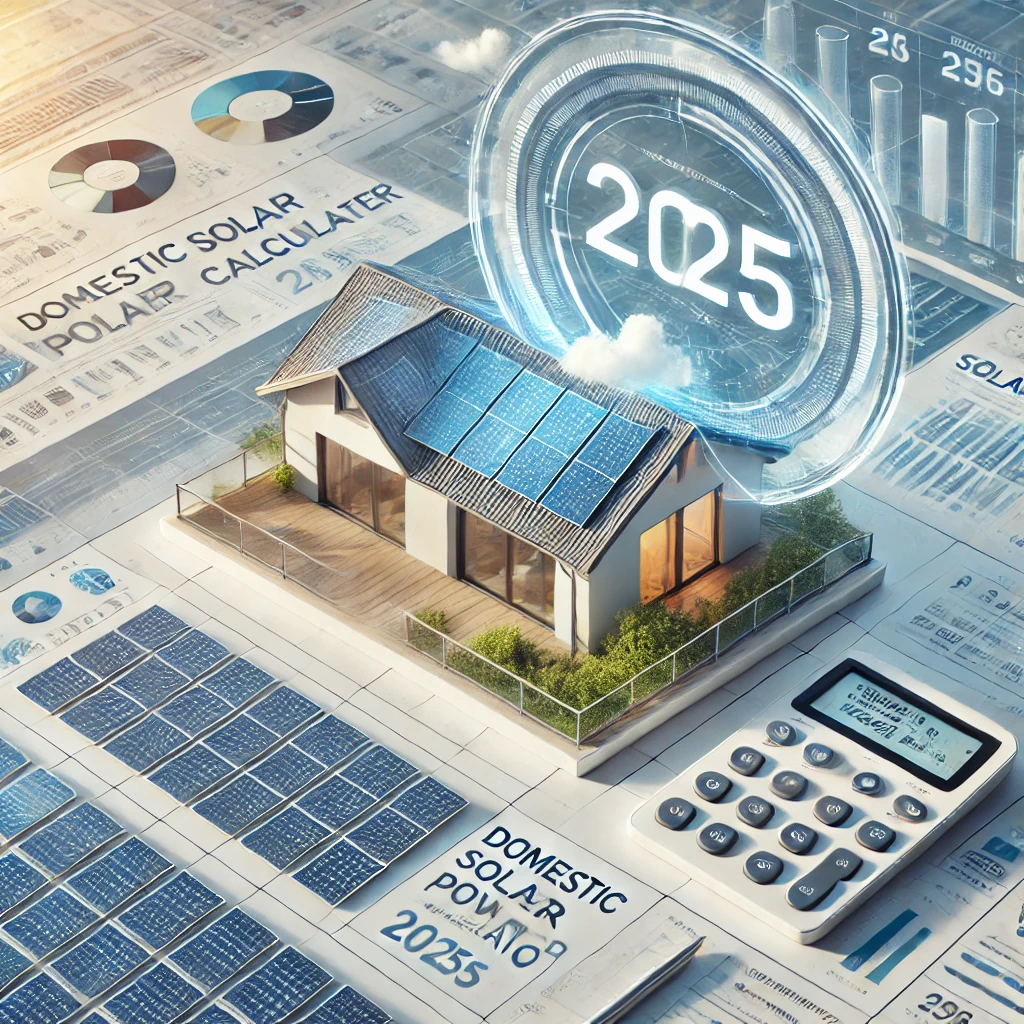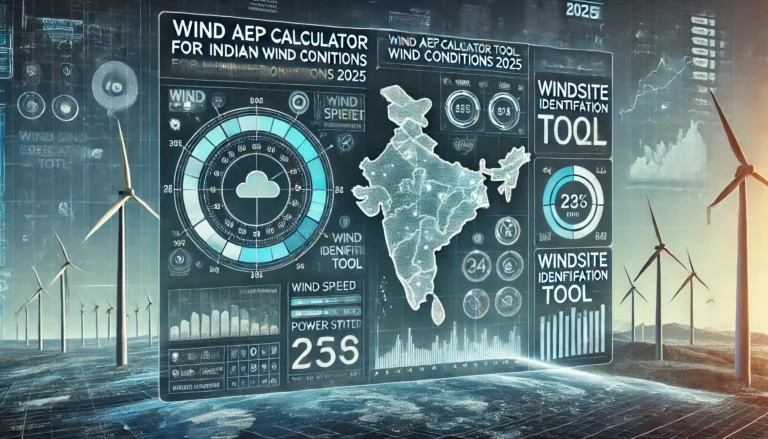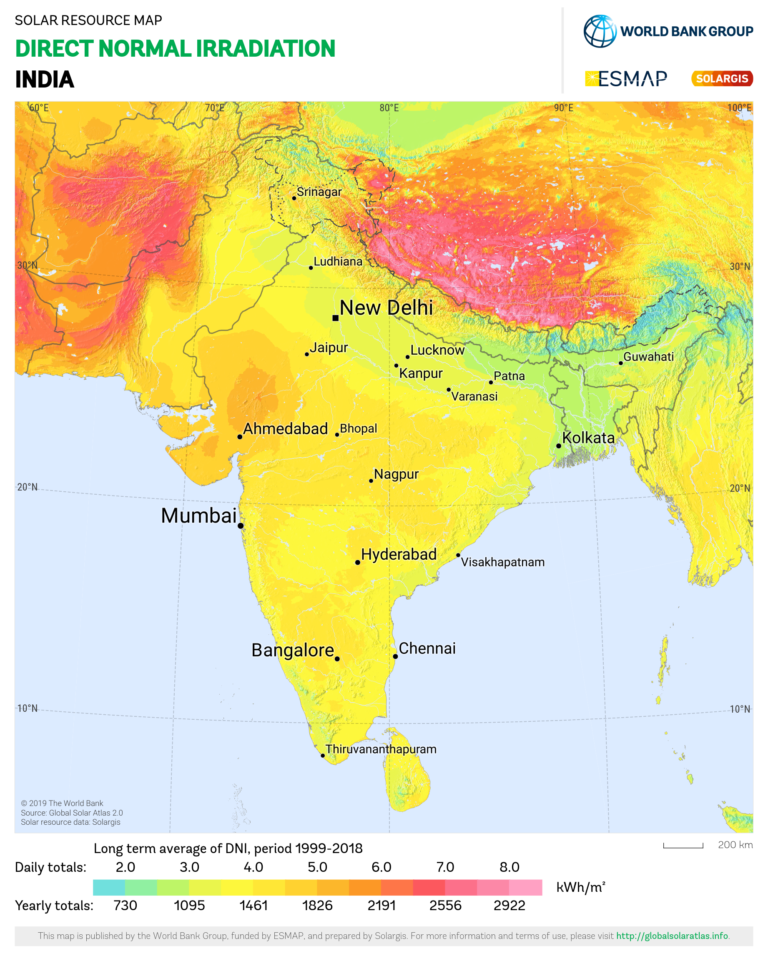
Solar LCOE Calculator
Understanding LCOE: The Benchmark for Solar Energy Costs
The Levelized Cost of Energy (LCOE) is a critical metric used to evaluate the overall cost-effectiveness of solar power plants. It represents the average cost of electricity generated by a power plant over its entire lifetime, expressed in ₹/kWh. For solar energy projects, LCOE serves as a benchmark for comparing energy production costs with traditional sources like coal or gas.
In this blog, we’ll delve into the components of LCOE, discuss the impact of various costs on calculations, and highlight best practices for optimizing solar power plant investments.
Key Components of LCOE
LCOE can be calculated using the formula:LCOE=Total Capex + NPV of Total OpexNPV of Total AEP\\text{LCOE} = \\frac{\\text{Total Capex + NPV of Total Opex}}{\\text{NPV of Total AEP}}LCOE=NPV of Total AEPTotal Capex + NPV of Total Opex
Here’s a breakdown of its components:
- Capital Expenditure (Capex): The initial investment required to set up the solar plant.
- Operational Expenditure (Opex): Annual costs for maintaining and operating the plant.
- Annual Energy Production (AEP): The total electricity generated annually.
- Net Present Value (NPV): A method to discount future cash flows to their present value using a discount rate.
- Plant Life: The operational lifespan of the solar plant, typically 25 years.
Factors Affecting LCOE in Solar Power Plants
1. Land Costs
- Input Metrics: ₹/Acre and Acres/MW
- Impact: Land costs vary significantly depending on location. For example, urban projects may have higher costs due to land scarcity. These costs directly impact total capex.
- Optimization: Selecting areas with low land costs or utilizing existing infrastructure for rooftop installations can reduce this component.
2. Solar Modules
- Input Metrics: ₹/Watt
- Impact: Modules are the heart of a solar plant, often accounting for 40-50% of total capex. Advanced technologies like bifacial panels can increase energy efficiency but may come with higher upfront costs.
- Optimization: Investing in high-efficiency modules with proven durability can lower LCOE by increasing AEP.
3. Inverters
- Input Metrics: ₹/Watt
- Impact: Inverters convert DC electricity to AC, making it usable. Their costs, typically 5-10% of capex, also affect LCOE.
- Optimization: Selecting inverters with higher conversion efficiency and lower maintenance costs can improve financial returns.
4. Module Mounting Structures (MMS)
- Input Metrics: ₹/Watt
- Impact: The choice of fixed tilt or tracker systems influences both capex and AEP. Tracker systems, while more expensive, can increase energy output.
- Optimization: Analyze the project\’s geographical location to determine if the added energy yield from trackers outweighs their cost.
5. Other Balance of Systems (BOS)
- Input Metrics: ₹/Watt
- Impact: BOS includes cabling, transformers, and electrical systems. Streamlined designs can reduce installation complexity and costs.
- Optimization: Use pre-engineered systems and ensure efficient site layouts to reduce BOS expenses.
6. Pooling Substation and EHV Costs
- Input Metrics: ₹
- Impact: These costs depend on grid connectivity and proximity to substations. Higher transmission distances increase EHV costs.
- Optimization: Select sites near existing substations to reduce transmission losses and associated costs.
7. Operational Costs
- Input Metrics: ₹/MW/year
- Impact: Regular maintenance, repairs, and administrative costs accumulate over the plant’s life. Ignoring these can skew LCOE calculations.
- Optimization: Implement predictive maintenance and monitor plant performance using AI-driven analytics.
8. Energy Production
- Input Metrics: kWh/year/MW
- Impact: High AEP lowers LCOE by increasing the denominator. However, this depends on factors like module efficiency, weather conditions, and tilt angles.
- Optimization: Conduct detailed feasibility studies, optimize plant design, and implement cleaning schedules for maximum energy output.
Practical Example: LCOE Calculation
Scenario:
- Plant Capacity: 1 MW
- Land Area: 3 Acres/MW
- Land Cost: ₹1,500,000/Acre
- Module Cost: ₹14/Watt
- Inverter Cost: ₹4/Watt
- MMS Cost: ₹5/Watt
- Other BOS Cost: ₹6/Watt
- Total PSS Cost: ₹0
- Total EHV Cost: ₹0
- Opex: ₹400,000/MW/year
- Annual Production: 1,500,000 kWh/year/MW
- Discount Rate: 10%
- Plant Life: 25 years
Step 1: Calculate Capex
- Total Land Cost: ₹1,500,000 × 3 × 1 = ₹4,500,000
- Total Module Cost: ₹14 × 1 × 1,000,000 = ₹14,000,000
- Total Inverter Cost: ₹4 × 1 × 1,000,000 = ₹4,000,000
- Total MMS Cost: ₹5 × 1 × 1,000,000 = ₹5,000,000
- Total BOS Cost: ₹6 × 1 × 1,000,000 = ₹6,000,000
- Total Capex: ₹4,500,000 + ₹14,000,000 + ₹4,000,000 + ₹5,000,000 + ₹6,000,000 + ₹0 + ₹0 = ₹33,500,000
Step 2: Calculate NPV of Opex
Using a discount factor of 10% and plant life of 25 years:NPV of Opex=∑t=125Opex(1+0.1)t=₹3,630,816.01\\text{NPV of Opex} = \\sum_{t=1}^{25} \\frac{\\text{Opex}}{(1+0.1)^t} = ₹3,630,816.01NPV of Opex=t=1∑25(1+0.1)tOpex=₹3,630,816.01
Step 3: Calculate NPV of AEP
Using an annual energy production of 1,500,000 kWh/year/MW:NPV of AEP=∑t=125AEP(1+0.1)t=₹13,615,560.03 kWh\\text{NPV of AEP} = \\sum_{t=1}^{25} \\frac{\\text{AEP}}{(1+0.1)^t} = ₹13,615,560.03 \\text{ kWh}NPV of AEP=t=1∑25(1+0.1)tAEP=₹13,615,560.03 kWh
Step 4: Calculate LCOE
LCOE=Total Capex+NPV of OpexNPV of AEP\\text{LCOE} = \\frac{\\text{Total Capex} + \\text{NPV of Opex}}{\\text{NPV of AEP}}LCOE=NPV of AEPTotal Capex+NPV of Opex LCOE=₹33,500,000+₹3,630,816.01₹13,615,560.03=₹2.73/kWh\\text{LCOE} = \\frac{₹33,500,000 + ₹3,630,816.01}{₹13,615,560.03} = ₹2.73/\\text{kWh}LCOE=₹13,615,560.03₹33,500,000+₹3,630,816.01=₹2.73/kWh
The Role of Discount Rate
The choice of a discount rate significantly impacts NPV calculations. A higher discount rate undervalues future energy production, increasing LCOE. Developers must carefully select this rate, balancing project risks and investor expectations.
How to Optimize LCOE
- Enhance Energy Efficiency:
- Invest in high-efficiency modules and inverters.
- Use trackers in locations with high solar irradiation.
- Reduce Costs:
- Optimize site layout to minimize cabling and BOS costs.
- Negotiate bulk purchasing agreements for components.
- Increase Energy Yield:
- Clean modules regularly to maintain peak efficiency.
- Use performance analytics to identify underperforming components.
- Leverage Policy Incentives:
- Explore subsidies, tax credits, and low-interest loans to offset initial investments.
Conclusion
Calculating the LCOE for solar power plants is an intricate process influenced by multiple cost components and operational parameters. By understanding the impact of each factor, developers can make informed decisions to lower LCOE and enhance project viability. As solar energy becomes increasingly competitive, precise LCOE calculations will be instrumental in driving the transition to renewable energy.


